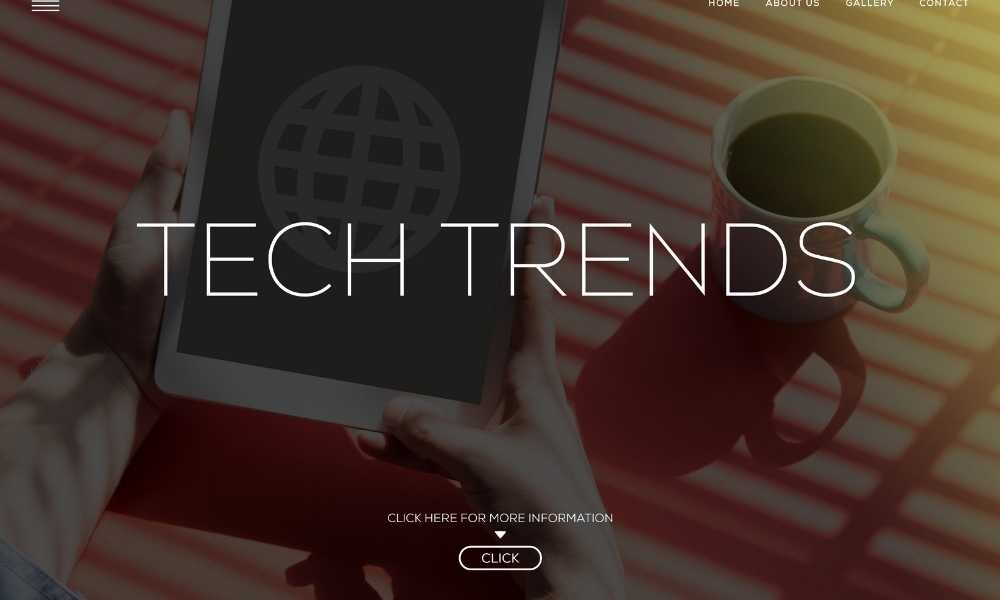More tech trends will be made in the coming decade than in the previous 100 years combined. In addition, 10 technical themes will dominate the evolving scene. Individuals and organizations can prevent unpleasant systemic shocks by understanding the impacts of this transformation. Businesses that capitalize on technology breakthroughs earn a higher rate of return on their investments.
The IT industry has permanently moved at a dizzying speed. In late 2019, a decade’s worth of e-commerce growth might have been compressed into three months, meaning that the next decade will witness more technical advancement than the previous 100 years combined.
Any change is scary, but keeping up with current events is particularly difficult. Determining which improvements are the most significant and less likely to yield fruit is part of the challenge.
These are the top 10 innovations fighting for the attention and financing of investors and technologists. They are also the most likely to play a significant role in the modern workplace’s shifting face. Understanding the influence of these tech trends on businesses and the individuals whose jobs will be affected is crucial for avoiding the worst repercussions of the potential disruption.
1. Al-powered Cybersecurity
Cyberattacks, email phishing, cryptocurrency scams, and ransomware are rising, driving cybersecurity companies to search for technological solutions to address the flaws. Individual accounts, countries’ critical infrastructure, and organizations are all being hacked, resulting in losses worth millions of dollars.
In the aftermath of the COVID-19 virus, workplace digitization and remote working made it necessary to teach staff about online safety to avoid data breaches and losses.
Furthermore, many businesses are adopting and implementing new cybersecurity technologies, such as artificial intelligence (AI), to monitor and safeguard networks against hackers in real-time rather than reacting to a threat after it has occurred. In addition, cloud storage providers offer end-to-end encryption for data storage and transport over the internet.
2. Automation of Virtualization and Robotic Processes
As advanced robotic process automation and virtualization become more common, over half of all present labor tasks could be automated over the next few decades.
More than 50 billion devices will be connected to the Industrial Internet of Things by 2025. (IoT). Each year, robots, automation, and 3D printing, among other technologies, will generate 79.4 zettabytes of data.
3. 5G technology adoption
Subscriptions to 5G technology will approach one billion this year, according to Ericsson’s Mobility Report, which Statista Research released.
While 4G made significant advances, such as seamless video streaming, 5G is 100 times quicker, implying that uploads, downloads, data transfers, and streams would be substantially faster.
The Internet of Things (IoT), a network of internet-connected intelligent gadgets that connect and interact, will benefit from 5G. Unlike 4G, the 5G network allows multiple devices to communicate without experiencing substantial performance, latency, or reliability deterioration. This is possible because of the network-slicing capability, which creates distinct networks with specific device services.
Furthermore, whereas 4G mobile networks struggle to sustain connectivity in densely populated places, 5G can send radio waves to one million devices per square kilometer.
4. Computers of the next generation
Next-generation computing will help solve long-standing challenges in science and society, allowing organizations to reach previously unimagined levels of capability.
It covers many far-reaching innovations, from quantum computing to completely driverless cars. As a result, it will not be a top priority for many enterprises. Determine whether your company operates in a first-wave industry (such as finance, travel, logistics, global energy and materials, or advanced industries) or whether it relies on trade secrets and other sensitive data that must be protected during the transition from current to quantum cryptography.
5. Behaviors on the Internet (IoB)
IoB devices help service companies acquire a lot of client data. In what has been nicknamed the Internet of Behaviors, businesses use analytics and practical data approaches to determine the worth of data (IoB).
By evaluating this client information, businesses can personalize their services, market their products, and improve a customer’s experience with the company.
While customized solutions are essential, companies must persuade customers to provide personal information to generate them.
Due to website hacking and other cybersecurity issues, customers are also hesitant to jeopardize their privacy in exchange for valued services. A new data collection approach will be necessary for enterprises’ data analysis needs
6. Biotechnological Revolution
A convergence of biological science discoveries, such as Optometry EMR, can significantly impact economies and our lives, influencing industries as diverse as health and agricultural production, consumer goods, energy, and materials.
The bio revolution, propelled by artificial intelligence, robotics, and DNA sequencing, offers gene therapies, hyper-personalized pharmaceuticals, and genetically guided nutrition and exercise. These technological breakthroughs will open up new markets, but they will also raise serious ethical considerations. Organizations must examine their Qb, or biological quotient, reflecting their biology knowledge and ramifications. Next, they should decide whether to integrate physical technologies and capabilities into their existing research and development efforts or partner with science-based start-ups based on the resources they need to commit to them.
7. The Metaverse
The renaming of Facebook as Meta drew attention to the metaverse, described as the next step in social networking.
People can log in as avatars to interact, work, shop, collaborate and play games in the metaverse, a three-dimensional virtual environment.
Businesses invested in cutting-edge tech like virtual reality (VR) and augmented reality (AR) to bring the metaverse to life. Virtual reality headsets, for example, allow users to explore and immerse themselves in digital worlds while also sharing their experiences with others.
Metaverse property sales topped $501 million last year and surpassed $85 million this year, according to MetaMetrics Solutions. Thanks to blockchain technology, individuals can now own these virtual items and even make in-game purchases.
8. Materials of the Future
Pharmaceuticals, energy, transportation, health, semiconductors, and manufacturing are just a few industries that could benefit from improvements in materials science. Graphene is one of these materials; it is a tiny sheet of carbon atoms arranged in a hexagonal lattice that, despite its extreme thinness, is 200 times stronger than steel. Furthermore, it is a highly efficient conductor with the potential to transform semiconductor performance. Another is molybdenum disulfide, which is already utilized in flexible electronics as nanoparticles.
Future materials with significantly improved efficiency in various as-yet-untapped application areas can change industry economics and restructure enterprises by modifying the economics of a wide range of goods and services.
9. Blockchain Technology
After years of doubt, blockchain tech is now striving to establish itself as a viable solution to various technological issues. Blockchain is a distributed ledger used to power cryptocurrencies, digital payment systems, encryption, and blockchain games. Non-fungible tokens (NFTs)–blockchain data units that are not interchangeable–are increasingly used by content creators to develop the material, sell it online, and earn cryptocurrencies.
Blockchain’s ledger feature allows it to store medical data and other personal records, enforce copyright protection, identify title deed owners, track online transactions, trade on NFT marketplaces, and monitor supply chains.
10. Collaboration Technologies
Office workers could not return to work due to the COVID-19 safety requirements. As a result, organizations have turned to remote working, using collaborative tech trends to re-create office surroundings, employee engagement, and workflows.
Companies that make collaboration tools have altered their offerings to fit the new and diverse demand for open workspaces.
The most extensively utilized collaborative technologies are Google Workspace and Microsoft Teams. Both businesses offer similar services.
- third-party integrations and proprietary project management applications
- apps for messaging,
- making phone calls, and
- video conferencing software for their virtual offices.
The key advantages of collaborative tech trends include document synchronization and real-time employee communication, ensuring that work is finished quickly.
Finally
The COVID-19 pandemic has tremendously impacted technical progress in the previous two years. People have become more aware of the necessity of enhancing access to medical care and treatment, extending e-commerce and digital payments, and improving online security. Environmental protection and the development of sustainable tech trends are also positive indicators for the planet’s future.
We provide tech trends for educational and cooperative technologies will continue to change how we study and work, and AI could help us figure out what’s best. To protect privacy and security, we must strike a balance between innovation and regulation.


